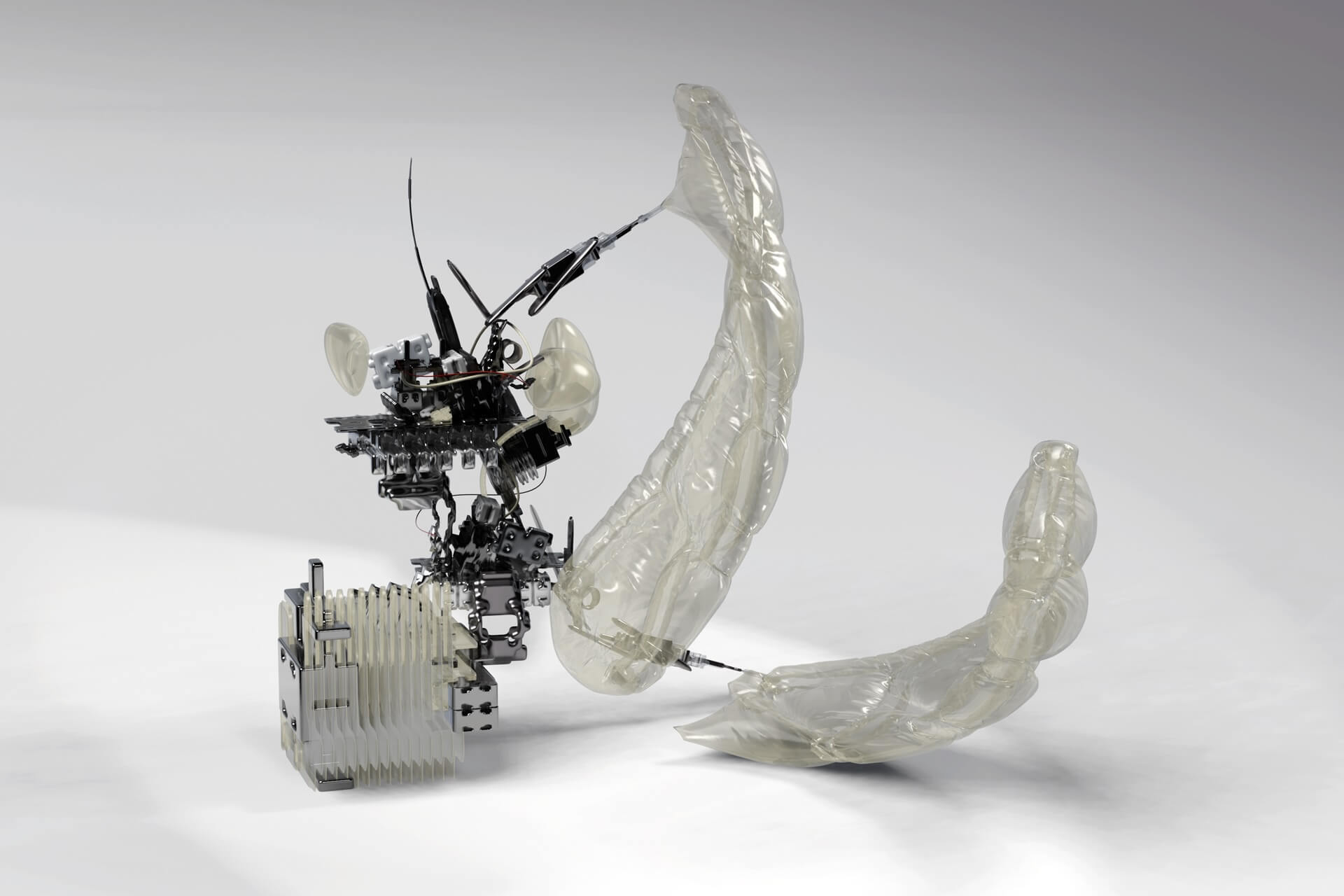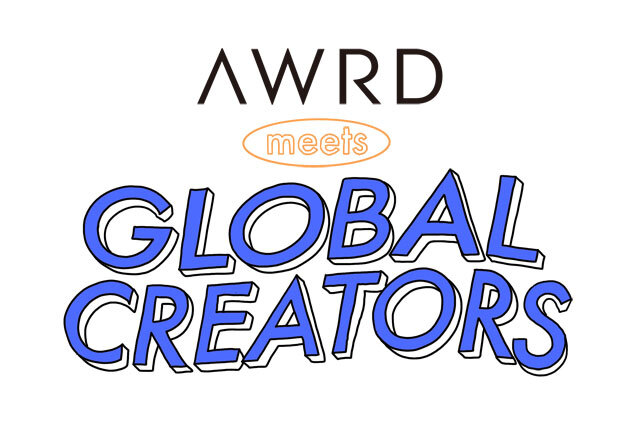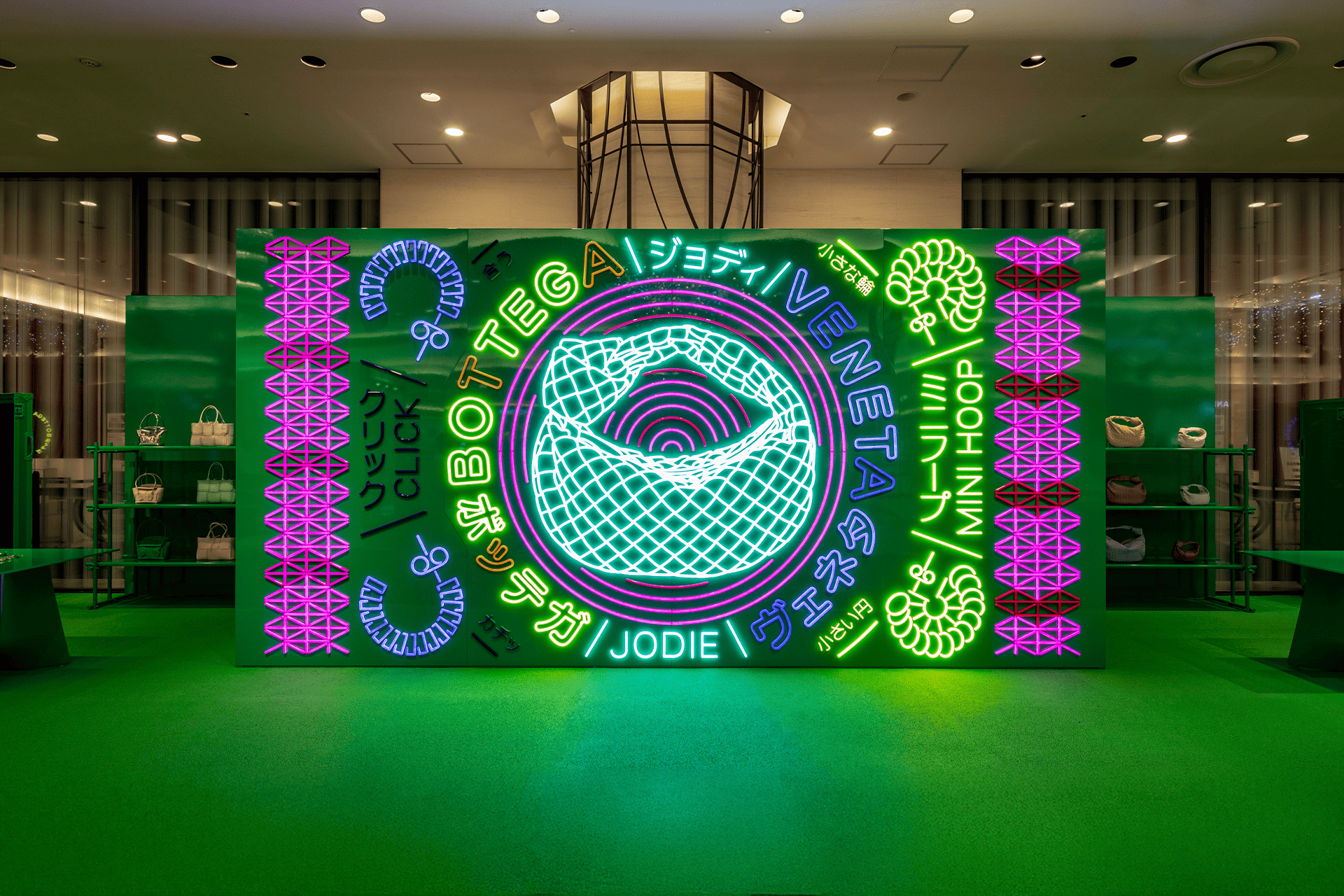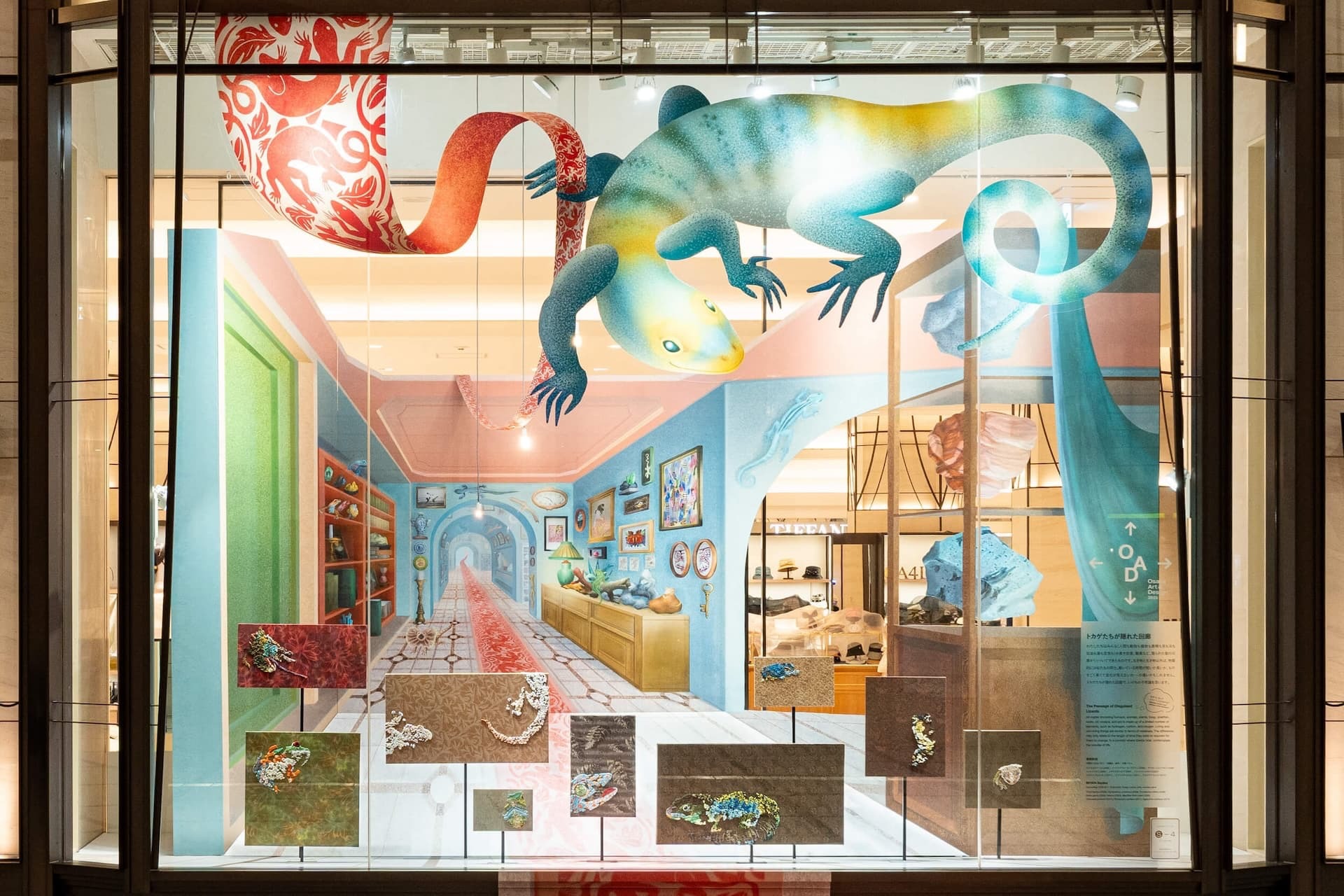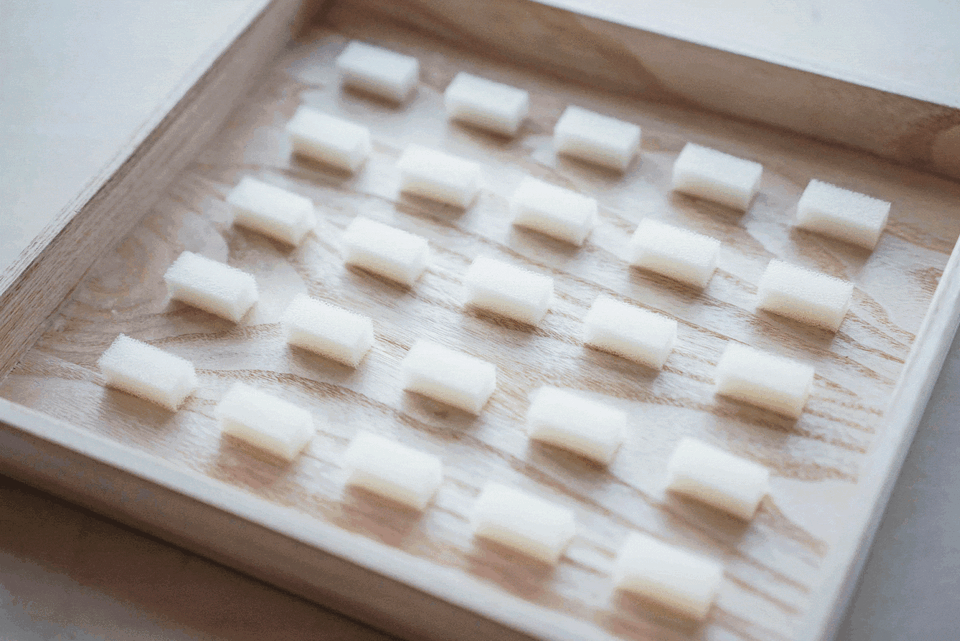The new series "AWRD meets GLOBAL CREATORS" (#AMGC) from the platform "AWRD," which connects creators and projects. Under the theme of 'New Sensibilities,' we spotlight up-and-coming creators from around the world who are active in various fields, such as design and art, exploring their work and the unique cultures of their respective countries.
For the inaugural edition, we feature Luna Woelle. After studying graphic design in her home country of Slovenia, Luna came to Japan to attend a culinary school specializing in Japanese cuisine. Since the pandemic, she has returned to digital art and is now active as a 3DCG artist, as well as expanding her career as a DJ.
Slovenia in Central Europe and Japan, located in the Far East from a European perspective—through Luna's activities and works, we explore the allure and differences in creativity that connect these two countries.
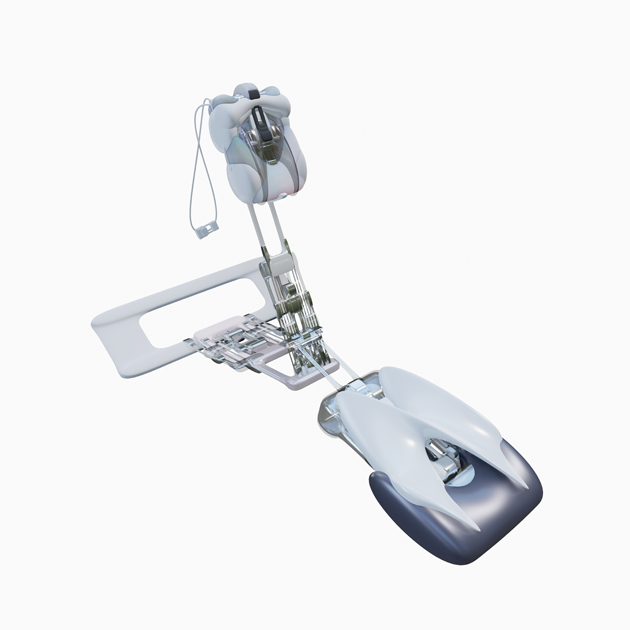
ーYou have an unusual background, having graduated from a Slovenian graphic design school and then enrolled in a Japanese culinary school. How did you start studying a completely different genre?
I grew up close to a Japanese family living in Slovenia and became accustomed to their food, culture, and language. At 14, I decided to officially start learning Japanese. Over time, I became fascinated with the work of the Japanese parents, who were both chefs. By age 15, I was deeply immersed in the visual aspects of traditional Japanese Kaiseki presentation. While studying graphic design at a specialized high school, I started catering for events and even collaborated with the Japanese Embassy in Ljubljana.
By then, I had made the decision to study culinary arts in Japan upon my high school graduation. At 16, I went on a month-and-a-half exchange to Japan, where I had the opportunity to learn from a Japanese chef. He gave me my first Japanese knife and traditional pottery and utensils, which I used to start my own "food theater" in Ljubljana, hosting customers for kaiseki-style dinners at home.
During my second exchange, I visited the Hattori Culinary School in Tokyo and learned about the Japanese government scholarship MEXT. I also took and passed the N2 level of the Japanese Proficiency Exam, a requirement for the application. For the next year and a half, leading up to my graduation, I worked and studied hard to pass the exams and interviews at the Japanese Embassy. Ultimately, I was accepted into the scholarship program, which sponsored three years of my study and living expenses in Japan.
ーDid anything you learned in Japanese cuisine come into play in your work?
Yes, elements of Japanese cuisine have significantly influenced my visual work. In fact, I feel like the way I understand and approach both subjects is very similar - the meticulous attention to detail and the aesthetic principles inherent in Japanese cuisine, particularly Kaiseki, have shaped my approach to digital art and vice versa. Kaiseki emphasizes harmony, seasonality, and the seamless integration of natural beauty into presentation. These concepts resonate deeply in my 3DCG creations, where I strive to blend mechanical precision with organic fluidity. The discipline and patience required in culinary arts have also translated into my workflow in 3D modeling, meticulously crafting each and every detailed object from scratch before assembling them into a cohesive and complete artwork.
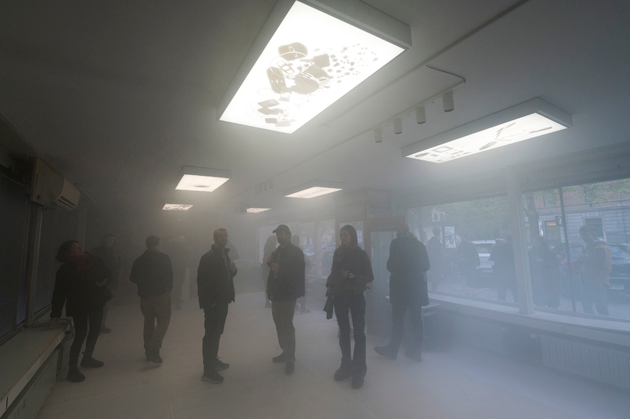
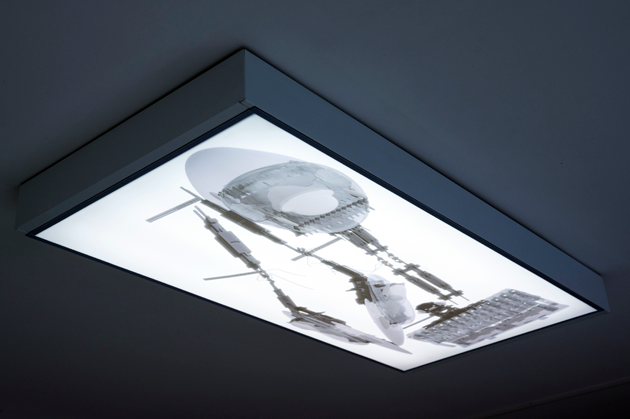
ーHow did you get started in 3DCG production?
Learning the 3D modeling software Blender was part of my high school curriculum, so I had already learned some of the basics in school and through working on individual projects. For my graduation project, I focused on creating a plan for my own restaurant and rendering it as realistically as possible inside Blender, using an existing location in the center of Ljubljana. However, after working on this project for almost a year, I became extremely frustrated with the software and vowed never to touch it again once I completed the project.
During the start of the pandemic, I felt a strong urge to create something on my own outside of school. I turned to abstract collage-making in Photoshop. Over time, my visuals started to resemble 3D structures more and more. Eventually, I decided to give Blender another try, but this time with a different approach - I chose to ignore the rules and focus solely on experimenting with the features, learning to create something by myself.
Starting with abstract shapes, I gradually became more comfortable and advanced to increasingly complex structures. This journey of experimentation and self-directed learning ultimately led me to dive into the world of Imaginary Robotics.
ー'Imaginary Robotics' has a mechanical yet biological form.What is the source of the idea?
The concept of "Imaginary Robotics" stems from a fascination with the intersection of the mechanical and the organic. During the pandemic, I began experimenting with abstract shapes in Blender, breaking free from conventional rules and allowing my creativity to flow without constraints. This period of exploration led to the birth of Imaginary Robotics.
The mechanical aspect of Imaginary Robotics draws from my interest in robotics and machinery, inspired by their precision and functionality. Meanwhile, the biological form comes from my deep appreciation for natural forms and structures. I aimed to create designs that blur the lines between the artificial and the natural, resulting in forms that feel both futuristic and familiar.
In Imaginary Robotics, I strip technology of its functional essence, giving rise to devices that exist independently, free from human use. This project challenges the feelings of practicality and security that make us rely on technology. Inspired by a sense of guilt over consumerism, I create objects that resemble functional apparatuses but are ultimately superficial and meaningless. These creations symbolize capitalist goods that provide fleeting dopamine highs yet leave us feeling empty and insecure, highlighting our growing dependence on technology.
ーAre there any similarities between your 3DCG work and your DJ activities?
The experimenting. Throughout most of my creation process in Blender, I experiment - stemming from my little knowledge of the complex software when I had just begun using it, I have kept the urge to experiment with modifiers, settings, and other features until I get results I am satisfied with. At the same time, with DJing, I constantly strive to keep it experimental and fun, from the use of various genres to the way of trying to perfect the transitions. Both fields require a willingness to explore and a commitment to pushing boundaries, ensuring that each creation or set is unique and engaging.
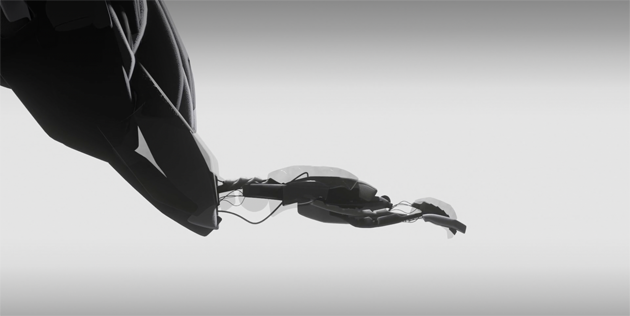
ーAre there any differences between Slovenia and Japan in terms of art and design produced in the two countries?
Focusing on my own communities in Slovenia and Japan, I feel that the differences in art and design produced in the two countries are becoming less pronounced as these communities increasingly merge through the internet. The digital age has facilitated a global exchange of ideas, styles, and techniques, allowing artists and designers from both countries to influence and inspire each other more freely.
ーPlease recommend any spots in Slovenia and Japan, respectively, where you can find inspiration for your activities. Either one is fine.
In Slovenia, I grew up frequenting the autonomous Metelkova district in Ljubljana, the capital city. Originally ex-military barracks, Metelkova has been transformed through squatting into a vibrant hub for creatives. Covered in graffiti and featuring incredible sculptures, it's renowned not just for its clubs and bars, but also for its studios and workshops. As a child, I visited creative workshops there, and as a teenager, it became a favorite hangout spot. Now, returning full circle, I've had the opportunity to DJ there several times, further deepening my connection to its creative energy.
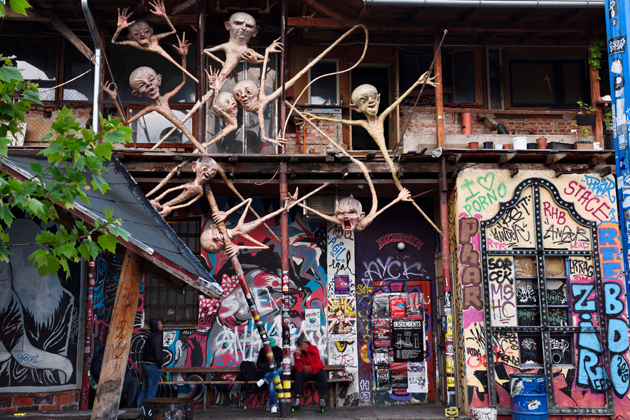
ーDoes the culture of your country or city of birth influence your work? If so, in what ways?
The culture of the community I grew up in has deeply inspired my work. I got very lucky with my parents - they have been the greatest influence on me. My mom, Irena Wölle, is a graphic designer featured in the MoMA collection and an activist. Her artistic vision and commitment to social causes have shaped my approach to creativity, aesthetics and advocacy. My dad, Vuk Ćosić, is an internet art pioneer and activist, shaping my understanding of digital art and its intersection with technology and society.
Moreover, the incredible community I grew up in has played a significant role. The bars and the people, the artists, the DJs - they all contributed to shaping my creative perspective and nurturing my passion for artistic expression. The vibrant environment provided constant inspiration and encouraged me to later explore different forms of art and creative expression in my own work.
ーPlease inform us of any future exhibitions or events.
It is still in the works and a bit too early to share, but I hope you can look forward to it :)
ーWe look forward to seeing more of your work, where inspiration from various genres and cultures blends together. Thank you very much!
Profile:
3DCG Artist / Designer / DJ
Luna Woelle, born in the year 2000, is a Slovenian 3DCG artist currently based in Tokyo. Graduating from a graphic design high school in Ljubljana she moved to Japan on a scholarship program to study Japanese traditional cuisine, driven by her interest and previous projects based on the art of Kaiseki presentation. With the start of the pandemic she found herself returning to digital art - starting with abstract, organic shapes, moving onto hard-surface modeling and experimenting with 'Imaginary Robotics'.
So far, she has exhibited her work in Japan, Berlin, Miami, and Slovenia. She has also been published in a KIDZ book available in galleries, museums, and bookstores worldwide. Collaborating with brands like CASIO G-SHOCK and YAMAWA, she has successfully implemented her art style in various visual freelance projects.
Beyond visual art and design she is also a DJ, performing at venues in Japan and abroad. She co-founded a music label Mizuha 罔象 and was involved as a manager and curator.

Luna Woelle
Links
Luna Woelle website:https://www.lunawoelle.com/
Luna Woelle Instagram:https://www.instagram.com/wo11.e/
Soundcloud : https://soundcloud.com/luna-woelle
Edit by AWRD editor
